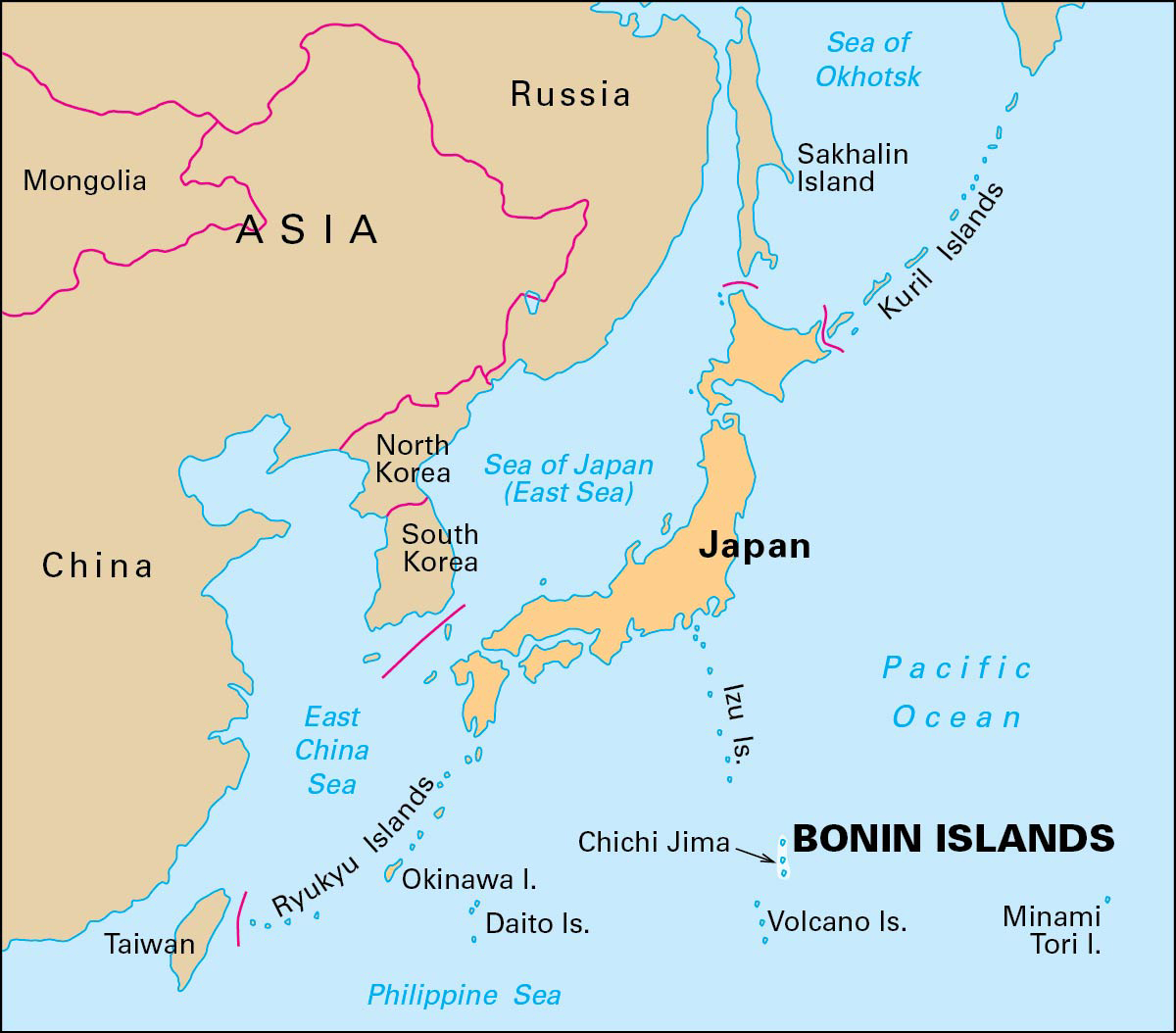Bonin Islands, << BOH nihn, >> include 97 volcanic islands that are about 600 miles (970 kilometers) south of Tokyo. The islands are owned by Japan. They are also called the Ogasawara Islands. The three main groups of the Bonin Islands include the Chichishima (Beechey) group, the Hahajima (Bailey) group, and the Mukoshima (Parry) group.

The islands have a total area of about 41 square miles (106 square kilometers). Chichi Jima, the largest and most important island, covers 15 square miles (39 square kilometers). The Bonin Islands are rocky and covered with scrubby trees and tall grass. The warm Kuroshio, or Japan Current, flowing between the islands and Japan makes the climate mild and warm. About 3,000 people live on the Bonin Islands. They raise fruits, sugar cane, cacao, vegetables, and cattle, and make coral ornaments.
The Bonin Islands were colonized in 1830 by adventurers from Honolulu. Japan claimed the islands in 1875, and named them Ogasawara-gunto. About 6,000 Japanese lived there before World War II (1939-1945). During the war, Japan used the islands as military bases. United States forces attacked the Japanese there. Later, the islands were placed under U.S. control. All Japanese were removed, but the United States allowed some of the original colonists to return. Control of the islands returned to Japan in 1968.
